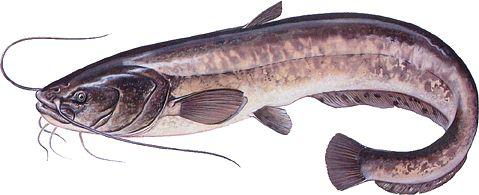Catfish whole 2000/5000

SPECIES DESCRIPTION
Catfish have widely been caught and farmed for food for hundreds of years in Africa, Asia, Europe, and North America. Judgments as to the quality and flavor vary, with some food critics considering catfish as being excellent food, while others dismiss them as watery and lacking in flavor. Catfish is high in Vitamin D. Farm-raised catfish contains low levels of omega-3 fatty acids and a much higher proportion of omega-6 fatty acids.
In Central Europe, catfish were often viewed as a delicacy to be enjoyed on feast days and holidays. Migrants from Europe and Africa to the United States brought along this tradition, and in the Southern United States, catfish is an extremely popular food.
The most commonly eaten species in the United States are the channel catfish and the blue catfish, both of which are common in the wild and increasingly widely farmed. Farm-raised catfish became such a staple of the diet of the United States that on 25 June 1987, President Ronald Reagan established National Catfish Day to recognize "the value of farm-raised catfish."
Catfish is eaten in a variety of ways. In Europe it is often cooked in similar ways to carp, but in the United States it is popularly crumbed with cornmeal and fried.
Pecel lele served with sambal, tempeh and lalab vegetables in a humble tent warung in Jakarta, Indonesia
In Indonesia, catfish is usually served fried or grilled in street stalls called warung and eaten with vegetables and sambal; the dish is called pecel lele or pecak lele. The same dish can also be called as lele penyet (squashed catfish) if the fish is lightly squashed along with sambal in the stone mortar. The pecel/pecak version present the fish in separate plate while the stone mortar is solely for sambal (Lele is the Indonesian word for catfish.)
In Malaysia catfish, called "ikan keli", is fried with spices or grilled and eaten with tamarind and Thai chillies gravy and also is often eaten with steamed rice.
In Bangladesh and the Indian states of Odisha, West Bengal and Assam catfish (locally known as Magur) is eaten as a favored delicacy during the monsoons. Catfish, locally known as thedu or etta in Malayalam, is popular in the Indian state Kerala.
In Hungary catfish is often cooked in paprika sauce (Harcsapaprikás) typical of Hungarian cuisine. It is traditionally served with pasta smothered with curd cheese (túrós csusza).
In Myanmar (formally Burma), catfish is usually used in Mohinga, a traditional noodle fish soup cooked with lemon grass, ginger, garlic, pepper, banana steam, onions, and other local ingredients.
Filipino fried hito (catfish) with vinegar and kalamansi dip sauce
Vietnamese catfish (Pangasius) cannot be legally marketed as catfish in the United States, and is subsequently referred to as swai or basa[44] Only fish of the family Ictaluridae may be marketed as catfish in the United States.[45] In the UK, Vietnamese catfish is sold as "Vietnamese river cobbler".[46]
In Nigeria, catfish is often cooked in a variety of stews. It is particularly cooked in a delicacy popularly known as "Catfish Pepper Soup" which is enjoyed throughout the nation.
